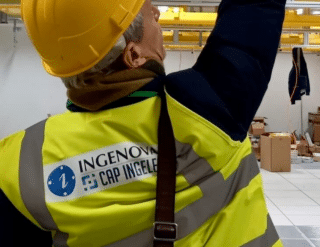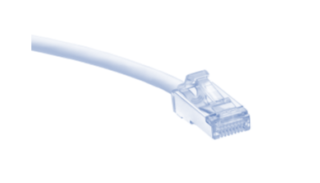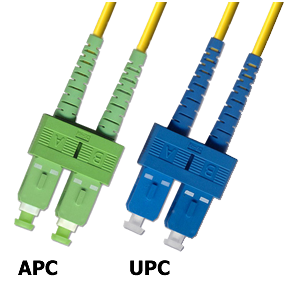
For what purpose should APC optical connectors be used instead of UPC in DATACENTERs ?
These acronyms are shown regularly in the choices we have to make in the assembly of fiber-optic networks. The fact is that the APC connector is more expensive than the UPC connector.
There are now 2 large families of optical connector type in IT networks :
- APC : Angled Physical Contact
- UPC : Ultra Physical Contact
In the use of light to transport information, it is necessary to minimize all losses of light energy so that the signal on arrival is as minimally distorted as possible. We, then talk about the Insertion Loss. But there is a less-known subject that concerns the reflection of the signal to the transmitter, called reflectance. This is where the difference between these 2 types of connectors is played out.
2 values are particularly observed for losses in optical architectures :
- Insertion Loss (or IL )
- Reflectance (Return Loss ou RL)
The insertion loss allows the definition of the optical budgets necessary for the creation of the optical architectures according to the communications protocols that will be used.
∴ UPC connector (or PC that is even older) because of its design offers a horizontal return of light energy to its transmission.
As a result, it is more likely to disrupt the signal at the broadcast :
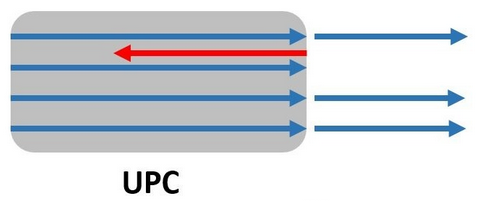
∴ APC connector offers a polished 8° angle ferrule (connector), thereby preventing the return of light directly into the transmitter.o
The reflected light is sent into the surface, thereby reducing the reflected energy.
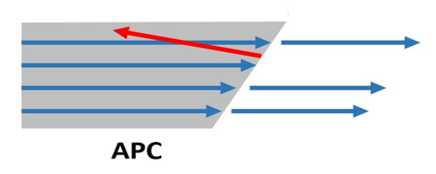
→ APC connector provide better reflectance performance.
→ UPC connector can have minimum threshold of 50db (RL -50db) when the APC connector has a minimum of 60db (RL -60Db).

The importance of the signal returned to the transmitter is due to the cleanliness of the 2 ferules, their perfect polishing, the quality of alignment and the minimum space between 2 aligned connectors. Even in the best case, the connections / disconnections of the connectors will inevitably lead to reflectance increases.
This is why the APC connector was created. In order to deal with these mechanical and crushing problems that will undoubtedly arise, it is also necessary to ensure that the signal does not return directly to the transmission zone.
APC connectors are available in LC/SC and MTP format.
When manufacturers meet the standards, the UPC connector and the crossings are BLUE, whereas for the APC the GREEN is required.
Why not have a more efficient connector if the price is the same as the one with less good features?
That is why the APC connector has not yet become generalized. It’s about 40 percent and more expensive.
Yes, it is important to connect connectors of the same type, otherwise the losses would be greater. The link could therefore be ineffective or have transmission speed defects.
While the importance is often given to optical loss, reflectance can cause significant deterioration, particularly for wavelengths beyond 1500 nm. This particularly targets single-mode links in 1550nm.
In addition, the wavelength multiplexing technology is also more reflectance sensitive. It is therefore usual in long distance and/or multiplexed single-mode links to use the APC type for connectors. The value in multi-mode connection with standard Ethernet protocols is not proven.
In data center, the use of the APC connector will therefore be limited to DWDM connections, to long distance single-mode links based on splitter. Elsewhere, it is used wherever passive separators are present, such as in FTTH installation (Fiber To The Home).
However, it should be noted that in most MTP OS2 connectors, benefits from being APC.
While UPC connectors are used everywhere for economic reasons, APC connectors are mainly for LC/SC single-mode links and in MTP connectors.
It is important to learn about the nature of the embedded connectors on the test tools. In fact, most of the time, the connectors are rather oriented on UPC. Path cables or suitable launch coils will suit the needs.
The choice about the type of APC or UPC connector depends on the use of the optical link that will be created !
Frédéric COPPENS, Technical Director – INGENOVA



